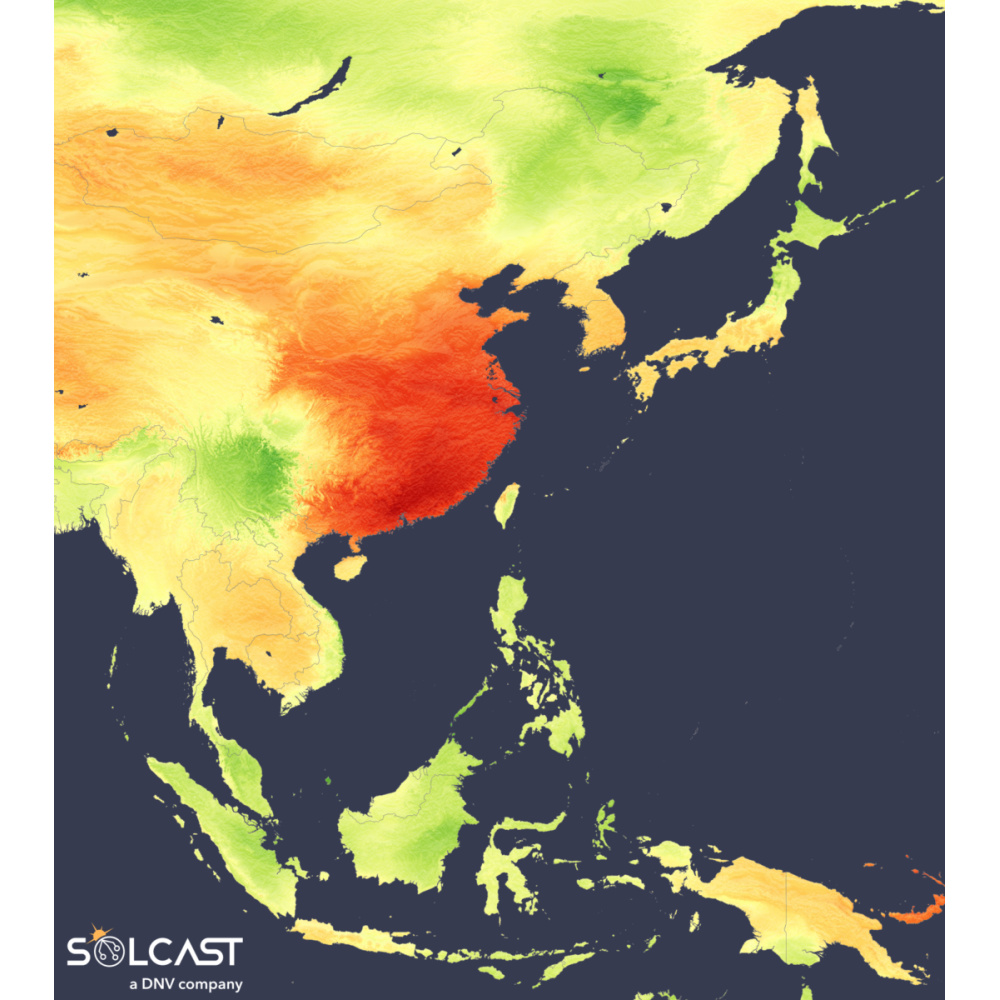China’s year-to-date irradiance up 30% as aerosols drop

Eastern China’s clear and dry start to 2025 has continued through April, maintaining the strong irradiance anomalies first observed in January. Solar irradiance across the eastern lowlands remains markedly elevated, supported by persistently weak onshore trade winds and a notable reduction in atmospheric haze. These conditions, which follow an exceptional January, have pushed year-to-date irradiance in some parts of China to levels 30% above the long-term average, according to analysis using the Solcast API.
Eastern China saw an extraordinary spike in irradiance at the beginning of the year, with January values reaching 60% above the long-term average. While La Niña conditions contributed to that early-season anomaly, those have since given way to neutral ENSO conditions. Despite this, the trade winds have remained subdued, continuing to limit the inflow of moisture from the Pacific and sustaining a cool, dry pattern over the region. This lack of cloud-forming humidity, coupled with lower than average rainfall and notably reduced atmospheric aerosols, has kept skies over eastern and central China unusually clear.
South Korea has also benefited from these regional weather patterns, recording a 10% increase in irradiance from January to April relative to the long-term average. In contrast, the Yunnan region in southwestern China lagged behind its eastern counterparts, with more persistent haze likely contributing to irradiance values below average for the same period.
A key factor behind this trend is the significant reduction in airborne pollutants. From January through April, as measured by aerosol load, major Chinese cities recorded some of their cleanest air in nearly two decades. Irradiance lost to aerosols and haze was at its lowest level since Solcast tracking begins in 2007 in Beijing, and second lowest in Guangzhou. Shanghai’s readings were the fourth cleanest on record, trailing only the pandemic-influenced years of 2020–2022. Seoul, too, saw its lowest levels of pollution over the same period.
This drop in aerosol loading could be linked to intensified clean air and pollution reduction efforts across China. In addition to boosting irradiance, this trend has important implications for precipitation. With fewer aerosols to seed smaller raindrops, recent research suggests more efficient rainfall processes may emerge, increasing the likelihood of heavier downpours. While this dynamic has not yet manifested in eastern China’s current dry season, it may play a more prominent role during the upcoming summer wet season.
Elsewhere in Asia, irradiance conditions have been less consistent. While Japan and much of Southeast Asia showed values close to average, Indonesia experienced significantly wetter conditions than usual. With daily rainfall totals averaging 8mm above normal, associated cloud has suppressed irradiance. It is possible this is associated with remaining impacts from the recent La Niña conditions.
Solcast produces these figures by tracking clouds and aerosols at 1-2km resolution globally, using satellite data and proprietary AI/ML algorithms. This data is used to drive irradiance models, enabling Solcast to calculate irradiance at high resolution, with typical bias of less than 2%, and also cloud-tracking forecasts. This data is used by more than 350 companies managing over 300 GW of solar assets globally.
This content is protected by copyright and may not be reused. If you want to cooperate with us and would like to reuse some of our content, please contact: editors@pv-magazine.com.